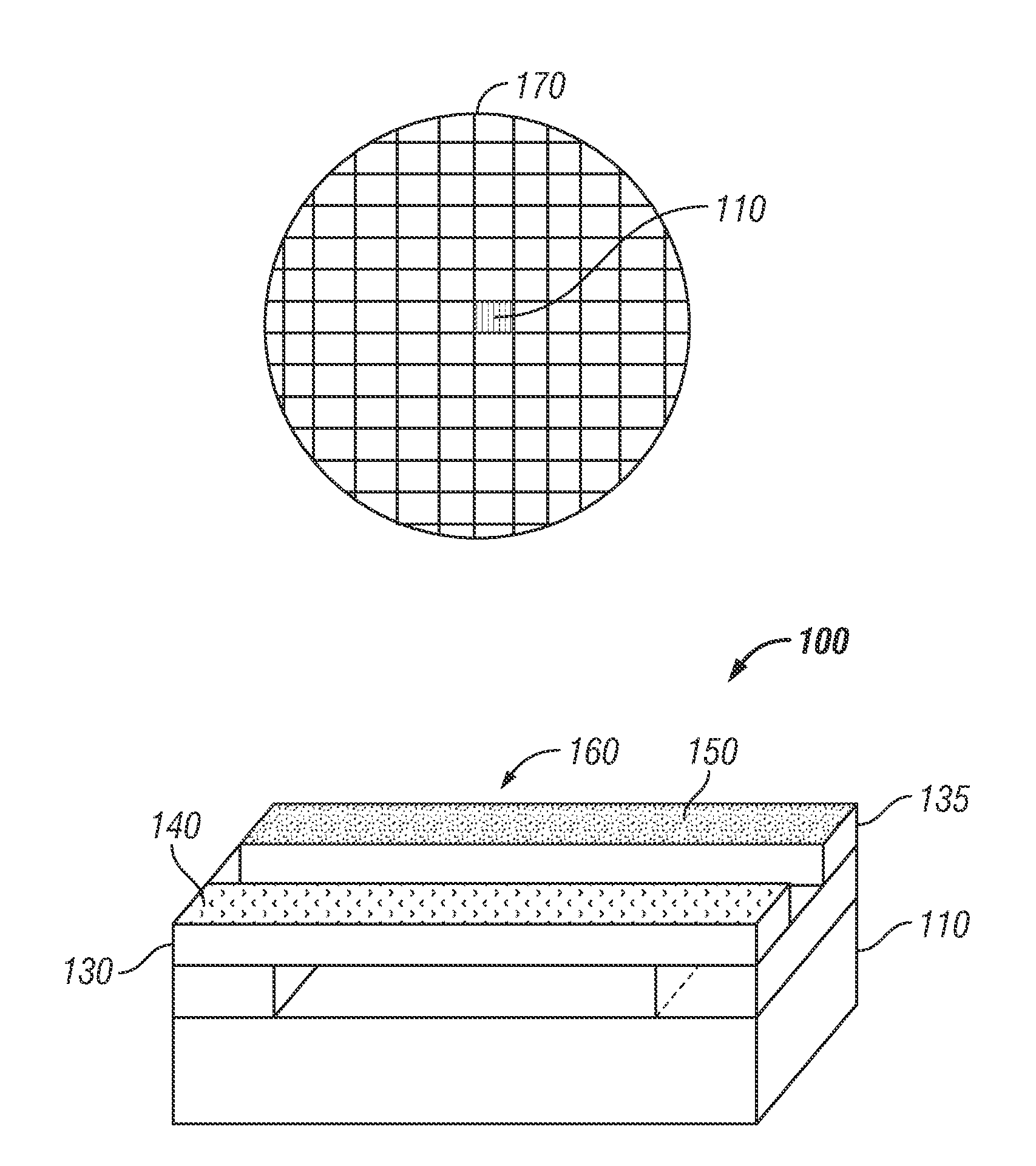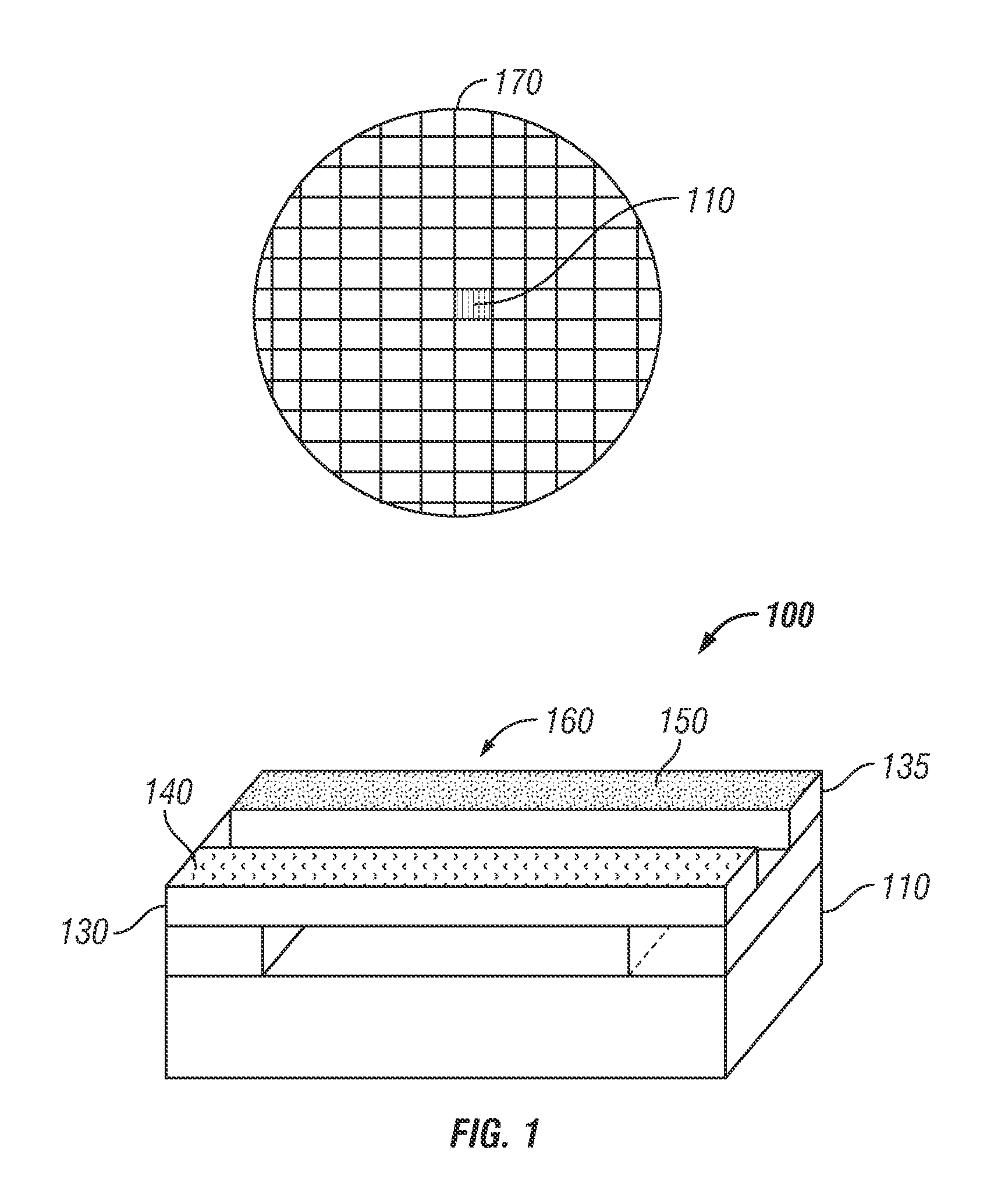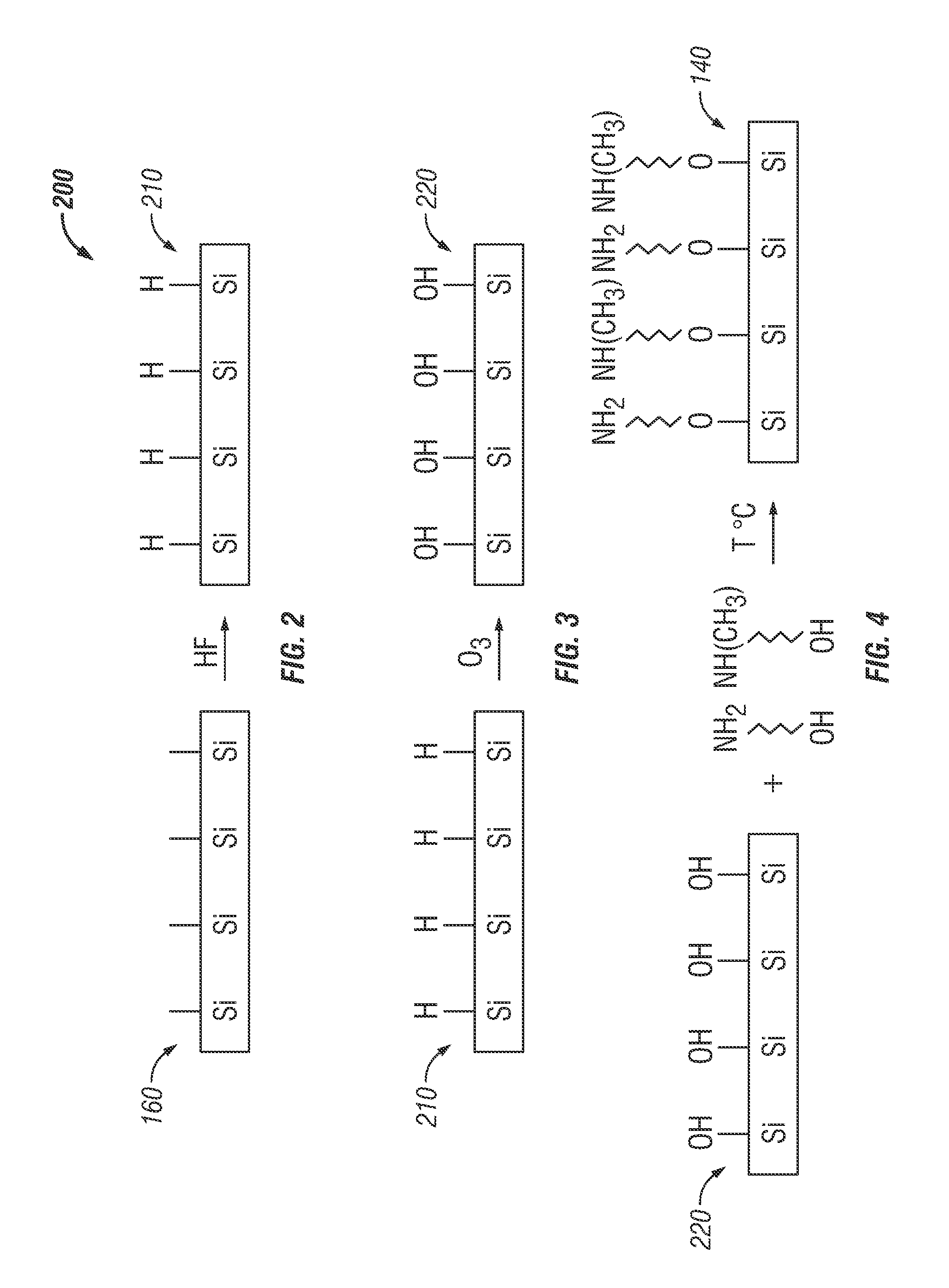Functionalized monolayers for carbon dioxide detection by a resonant nanosensor
a nanosensor and carbon dioxide technology, applied in the field of sensing devices and techniques, can solve the problems of low cost of fabricating such sensors for large area cosub>2 /sub>monitoring, poor drift behavior, and lack of long-term performance stability, so as to facilitate understanding
- Summary
- Abstract
- Description
- Claims
- Application Information
AI Technical Summary
Benefits of technology
Problems solved by technology
Method used
Image
Examples
Embodiment Construction
[0023]The particular values and configurations discussed in these non-limiting examples can be varied and are cited merely to illustrate one or more embodiments and are not intended to limit the scope thereof.
[0024]FIG. 1 illustrates a perspective view of an exemplary resonant nanosensor apparatus 100 and a schematic view of a processed silicon wafer containing a multitude of resonant nanosensor(s) 100, in accordance with the disclosed embodiments. Note that in FIGS. 1-16, identical or similar blocks are generally indicated by identical reference numerals. The resonant nanosensor apparatus 100 with gas detection capability may be employed to detect a gas (e.g. carbon dioxide) by eliminating base line drift issues. The apparatus 100 generally includes a sensing resonant beam 130 and a reference resonant beam 135 located on a chip 110, included in the wafer 170, which contains a multitude of such chips 110. The sensing beam 130 further includes a sensing monolayer 140 and the referenc...
PUM
| Property | Measurement | Unit |
|---|---|---|
| visco-elastic properties | aaaaa | aaaaa |
| concentration | aaaaa | aaaaa |
| electrochemical | aaaaa | aaaaa |
Abstract
Description
Claims
Application Information
 Login to View More
Login to View More - R&D
- Intellectual Property
- Life Sciences
- Materials
- Tech Scout
- Unparalleled Data Quality
- Higher Quality Content
- 60% Fewer Hallucinations
Browse by: Latest US Patents, China's latest patents, Technical Efficacy Thesaurus, Application Domain, Technology Topic, Popular Technical Reports.
© 2025 PatSnap. All rights reserved.Legal|Privacy policy|Modern Slavery Act Transparency Statement|Sitemap|About US| Contact US: help@patsnap.com



